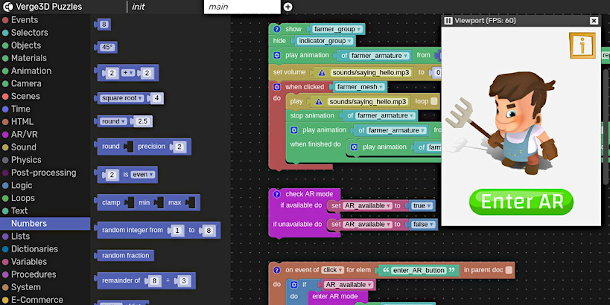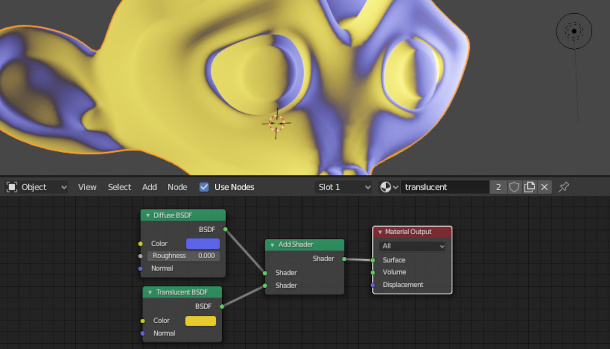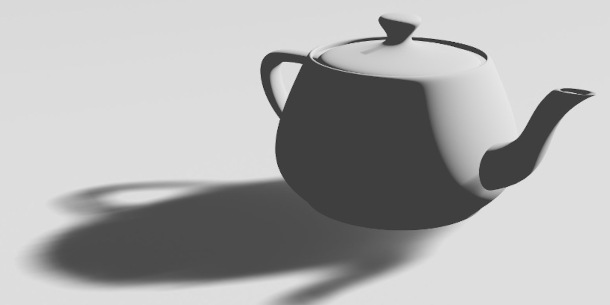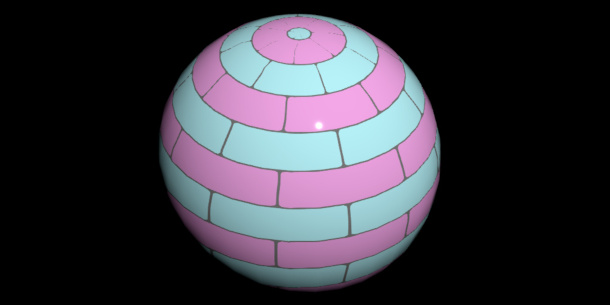Soft8Soft ships Verge3D 3.7
Originally posted on 5 March 2020. Click here for news of the 3.7 update.
Soft8Soft has released Verge3D 3.0, the next major version of its toolkit for converting 3ds Max, Blender or Maya scenes into browser-based 3D web applications.
The update overhauls the software’s user interface and workflow, adds a new dark UI theme, and introduces support for Oculus Quest headsets and dual-controller VR hardware.
Convert 3ds Max, Blender and Maya scenes into interactive browser applications
Founded by Blend4Web creator Yuri Kovelenov and his brother Alexander after a split from their former business partners, Soft8Soft now develops its own WebGL authoring framework.
Aimed at e-commerce and online marketing as well as games, the framework converts Blender, 3ds Max and, most recently, Maya scenes into interactive content that can be viewed in a browser.
It integrates directly with the host application, enabling users to create 3D geometry, materials and animations normally inside the software, then export them in the JSON-based glTF format.
Interactive functionality can be added via JavaScript, either by writing code directly or by using Puzzles, Verge3D’s visual programming environment.
Being based on WebGL, the resulting interactive application should display natively in most web browsers, without the need for plugins.
It is also possible to author augmented or virtual reality experiences, although as the implementation is based on the new WebXR API, browser support for them is currently more limited.

New in Verge3D 3.0: more streamlined user interface, and new optional dark theme
The 3.0 update streamlines workflow in two of Verge3D’s key work environments, the Puzzles editor and the App Manager, overhauling the layout of the user interface in both.
In the case of the Puzzles editor (shown above), the update is intended to increase usable screen space, with the workspace now always displayed fullscreen, with the 3D render preview in a floating window.
In the case of the App Manager, less frequently used options have been moved to a vertical toolbar, and new buttons added for deleting an app or opening its project folder from its entry in the list.
For speed, most operations now generate pop-up dialogs rather than redirecting to new interface pages.
The network file directory is now displayed in a clearer, tree-based view; and search and filtering capabilities have been improved throughout the software.
The update also introduces a new dark UI theme, both for Verge3D itself, and for the apps it generates.
Improved support for VR hardware and better glTF export
Verge3D 3.0 also adds support for Oculus Quest, Oculus’s wireless virtual reality headset, and makes it possible to use both controllers, rather than just one, with similar VR hardware.
There are also a number of other changes to the UI, Puzzles system, and glTF export backend, the latter resulting in “proper” handling of multiple UVs and ambient occlusion.
Blender users get support for the new options added to the Math shader node in Blender 2.82, plus support for the Clear Coat Normal input of the Principled BSDF node.

Updated 29 April 2020: Soft8Soft has released Verge3D 3.1.
The release introduces two new light-probe-based methods for image-based lighting, which should enable users to balance scene performance against visual quality of the output.
Soft8Soft has also ported Verge3D’s physics engine to the WebAssembly open standard, which it describes as resulting in “huge performance and memory footprint gains”.
Blender-specific features include support for the Translucent BSDF node.

Updated 23 June 2020: Soft8Soft has released Verge3D 3.2.
The release introduces new modes for rendering shadows, making it possible to trade visual quality of the results against interactive performance. Six shadow modes are now available.
In addition, the built-in performance profiling system now reports more information about a scene, including lighting and post-processing, and the automatic backup system for projects has been updated.
Blender users get support for Blender’s new Vertex Color, Tangent and Vector Rotate material nodes, and for normal maps when working with glTF-compliant mateials.
The biggest change is to the Maya edition, which now supports node-based materials. Initially, 19 nodes are supported, including both key native Maya nodes and Arnold material nodes like aiStandardSurface.

Updated 30 July 2020: Soft8Soft has released Verge3D 3.3.
The update optimises shader compilation to increase the speed at which scenes created with Verge3D load: according to Soft8Soft’s blog post, its own demo scenes load 1.3 to 2.8x faster.
Other changes include new options for tweening orbital camera paths, support for the HTML canvas as a texture within materials, and the option to export in glTF format directly from within Puzzles.
In addition, the 3ds Max edition gets initial support for the new OSL (Open Shading Language) maps introduced in 3ds Max 2019. You can find a list of the maps supported in version 3.3 in this blog post.
The Maya edition gets support for more shader nodes, including colorComposite and floatComposite.
Updated 22 December 2020: Soft8Soft has released Verge3D 3.5.
New features include support for soft-body physics, with presets for ropes, cloth and volumes – described in the release notes as being for “various cushiony things”.
Rigid body simulations now support constraints, including hinges, springs and swing constraints.
It is also now possible to author plugins for Verge3D via the Puzzles scripting system.
There are also a lot of other updates to Puzzles, and to CSS and JavaScript support: you can find a full list of changes via the link at the foot of the story.
The previous update, Verge3D 3.4, added the option to author custom shaders using Open Scripting Language (OSL) and a new scrolling transition effect.
Updated 28 May 2021: Soft8Soft has released Verge3D 3.7.
It’s a major update, adding support for global illumination, greatly improving the realism of published scenes. The implementation uses reflection cubemaps to represent indirect lighting from the environment.
Blender users can use Eevee light probes in Reflection Cubemap format; 3ds Max users can add Reflection Cubemap helper objects.
In addition, Verge3D now supports clipping planes, for creating interactive cutaway views of models.
It is also now possible to publish projects as Android or iOS apps, via the open-source Apache Cordova framework, or as native Windows, macOS and Linux desktop apps, via the Electron framework.
In addition, 3ds Max users get initial support for the Arnold renderer (you can find a list of Arnold materials and math nodes supported in this blog post).
The previous update, Verge3D 3.6, added support for Area lights in Blender and Rectangle Photometric Lights in 3ds Max. In addition, the 3ds Max and Maya editions got support for 3D text objects, while the Blender edition got support for custom fonts in 3D text.
Pricing and availability
Verge3D is available for 3ds Max 2019+, Blender 2.80+ and Maya 2018+.
The software can be trialled for free: for production, a personal licence costs $290, a team licence costs $990, and an enterprise licence – which gets you source code access – costs $2,990.
Read more about the new features in Verge3D 3.x on Soft8Soft’s blog
